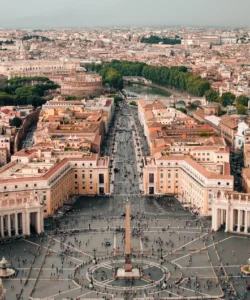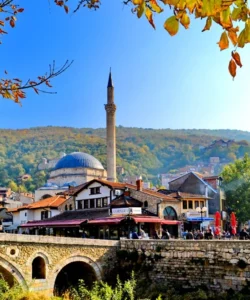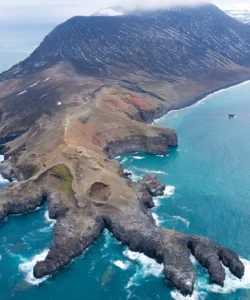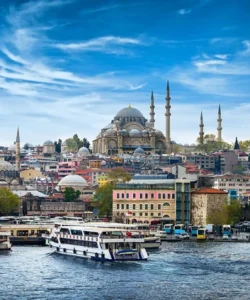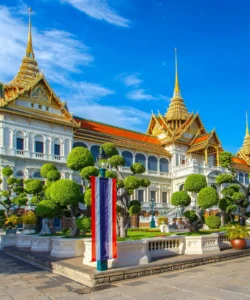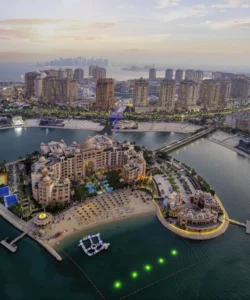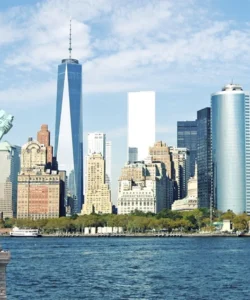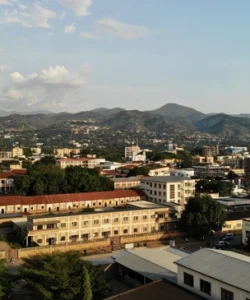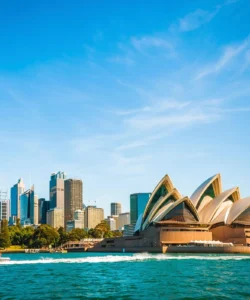Iceland, officially the Republic of Iceland, is a Nordic island nation in the North Atlantic Ocean. It is renowned for its dramatic volcanic landscape of geysers, hot springs, waterfalls, glaciers, and black-sand beaches. Despite its name, a significant portion of Iceland is green and fertile, especially in the lowlands.
Area: Approximately 103,000 square kilometers (39,769 sq mi).
Population: As of 2023, the population is estimated at around 395,000. It is one of the most sparsely populated countries in the world.
Language: The official language is Icelandic, a North Germanic language derived from Old Norse. It has changed very little since the 12th century, meaning Icelanders can still read ancient sagas. English is widely spoken and understood, especially by younger generations and in tourist areas. Danish is also commonly taught and understood.
Currency: The official currency is the Icelandic Króna (ISK).
Religion: The predominant religion in Iceland is Christianity, with the Evangelical Lutheran Church of Iceland being the established national church. There are also smaller communities of Roman Catholics, other Christian denominations, and adherents of Ásatrú (modern Norse paganism). A significant portion of the population identifies as non-religious.
Capital: Reykjavík is the capital and largest city of Iceland. It’s the world’s northernmost capital of a sovereign state, known for its vibrant cultural scene, colorful houses, and unique blend of urban life and proximity to nature.
Major Cities: Given its small population, outside of Reykjavík, other significant urban areas are much smaller and include Kópavogur, Hafnarfjörður, Akureyri (the “Capital of the North”), Reykjanesbær, and Garðabær.
Attractions & Wonders: Iceland’s attractions are overwhelmingly natural wonders, born from its unique geological activity:
- The Golden Circle: A popular tourist route covering three main attractions in Southwest Iceland:
- Þingvellir National Park (Thingvellir): A UNESCO World Heritage site of historical, cultural, and geological significance. It’s where the Althing (Icelandic parliament) was established in 930 AD, and it sits in a rift valley between the North American and Eurasian tectonic plates.
- Geysir Geothermal Area: Home to the Strokkur geyser, which erupts every few minutes, and the original Geysir.
- Gullfoss (Golden Waterfall): A powerful and beautiful two-tiered waterfall on the Hvítá river.
- Blue Lagoon: A world-famous geothermal spa, renowned for its mineral-rich milky-blue waters, contrasting with the black lava landscape.
- Jökulsárlón Glacier Lagoon: A stunning glacial lake filled with icebergs breaking off from the Vatnajökull glacier, often seen with seals. Boat tours are popular.
- Diamond Beach: Adjacent to Jökulsárlón, where icebergs wash ashore and glitter like diamonds on the black sand.
- Seljalandsfoss and Skógafoss: Two of Iceland’s most famous and picturesque waterfalls, located along the South Coast. You can walk behind Seljalandsfoss.
- Reynisfjara Black Sand Beach: Near Vik, this dramatic black-sand beach features basalt columns, Reynisdrangar sea stacks, and powerful waves.
- Vatnajökull National Park: Europe’s largest national park, encompassing the vast Vatnajökull glacier, ice caves (seasonal), and diverse landscapes.
- Northern Lights (Aurora Borealis): One of the main draws for winter visitors, visible when conditions are right, typically from September to April.
- Skaftafell Nature Reserve: Part of Vatnajökull National Park, offering hiking trails to Svartifoss waterfall (known for its basalt columns) and glacier tongues.
- Snæfellsnes Peninsula: Often called “Iceland in Miniature” due to its diverse landscapes, including the iconic Kirkjufell mountain, black-sand beaches, and charming fishing villages.
- Volcanoes and Geothermal Areas: Including the Fagradalsfjall eruption site (when active), Hverir geothermal area near Mývatn, and Askja caldera.
Architecture: Icelandic architecture is largely functional and adapted to the challenging climate and available materials.
- Turf Houses: Traditional Icelandic farmhouses, built with stone foundations and walls made of turf (sod) and timber. Many examples are preserved in open-air museums.
- Corrugated Iron (Bølgeblik): A distinctive feature of Icelandic towns, particularly Reykjavík, where many older wooden houses are clad in colorful corrugated iron for protection against the elements.
- Functionalism and Modernism: Post-World War II, there was a strong influence of functionalist and modernist styles, focusing on simple lines and practicality.
- Contemporary: Modern Icelandic architecture often incorporates elements inspired by nature, local materials, and emphasizes sustainability and energy efficiency. Notable modern landmarks include the Harpa Concert Hall and Conference Centre in Reykjavík, with its stunning glass facade, and Hallgrímskirkja Church, a unique modernist church inspired by basalt columns.
Roads: Iceland has a generally good road network for its size, but conditions can vary significantly. Route 1 (the Ring Road) circles the entire country (1,332 km or 828 mi) and is largely paved, making it the primary tourist route. However, many roads, especially in the highlands (F-roads), are unpaved gravel roads, rough, and only accessible by 4×4 vehicles during summer months. Weather conditions can change rapidly, impacting road safety and closures.
Hotels: Accommodation in Iceland ranges from international chain hotels in Reykjavík to charming guesthouses, cozy cottages, and farm stays in rural areas. There’s a growing number of boutique hotels and design-focused accommodations in the capital. Options also include hostels, campsites (popular in summer), and unique stays like bubble hotels for Northern Lights viewing. Demand often outstrips supply, especially during peak seasons, so booking well in advance is highly recommended.
Restaurants: Icelandic cuisine has traditionally relied heavily on fish, lamb, and dairy products. In recent years, there has been a strong movement towards modern Nordic cuisine, emphasizing fresh, local, and seasonal ingredients, often with an innovative twist.
- Reykjavík is the culinary hub, offering a diverse range of restaurants from fine dining to casual eateries, and a good selection of international cuisines.
- Traditional Icelandic Dishes:
- Kjötsúpa: Traditional Icelandic lamb soup, a hearty and warming dish.
- Plokkfiskur: Fish stew, typically made with mashed fish (cod or haddock) and potatoes.
- Hákarl: Fermented shark, a notoriously pungent traditional delicacy (often tried more for novelty than taste).
- Harðfiskur: Dried fish jerky, a popular snack, often eaten with butter.
- Skyr: A thick, high-protein dairy product, similar to strained yogurt, often served with berries.
- Pylsur (Hot Dog): Icelandic hot dogs, often considered a national dish, served with a unique blend of crispy fried onions, raw onions, ketchup, sweet mustard, and remoulade.
- Rúgbrauð: Traditional dense, dark rye bread, often slow-baked in geothermal heat.
- Fresh Seafood: Given its island location, fresh fish and seafood are abundant and excellent.
- Lamb: Icelandic lamb is known for its distinct flavor, as the sheep roam freely and graze on wild herbs.
- Coffee culture is strong in Iceland, and there are many cozy cafes.
[envira-gallery id=”3988″]
